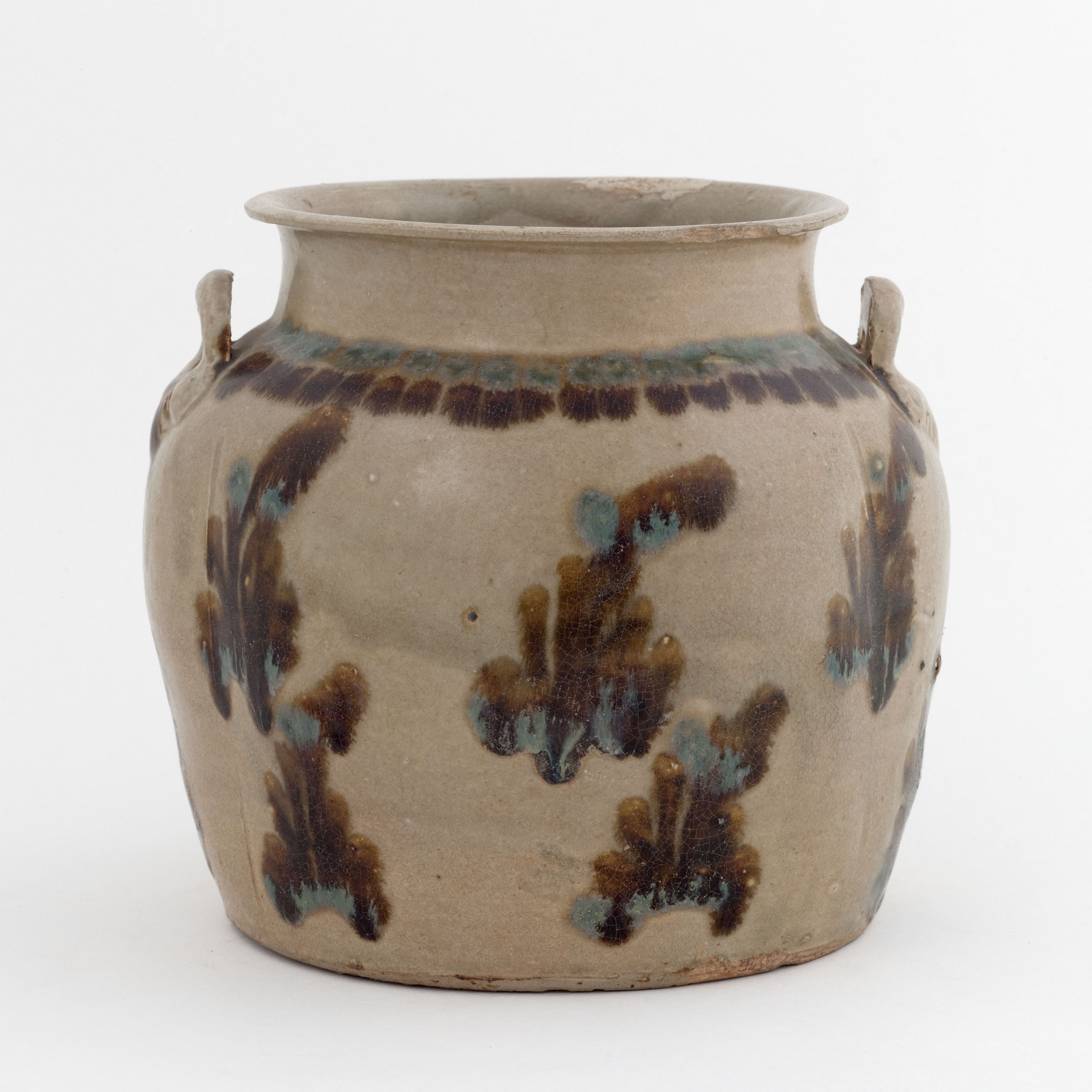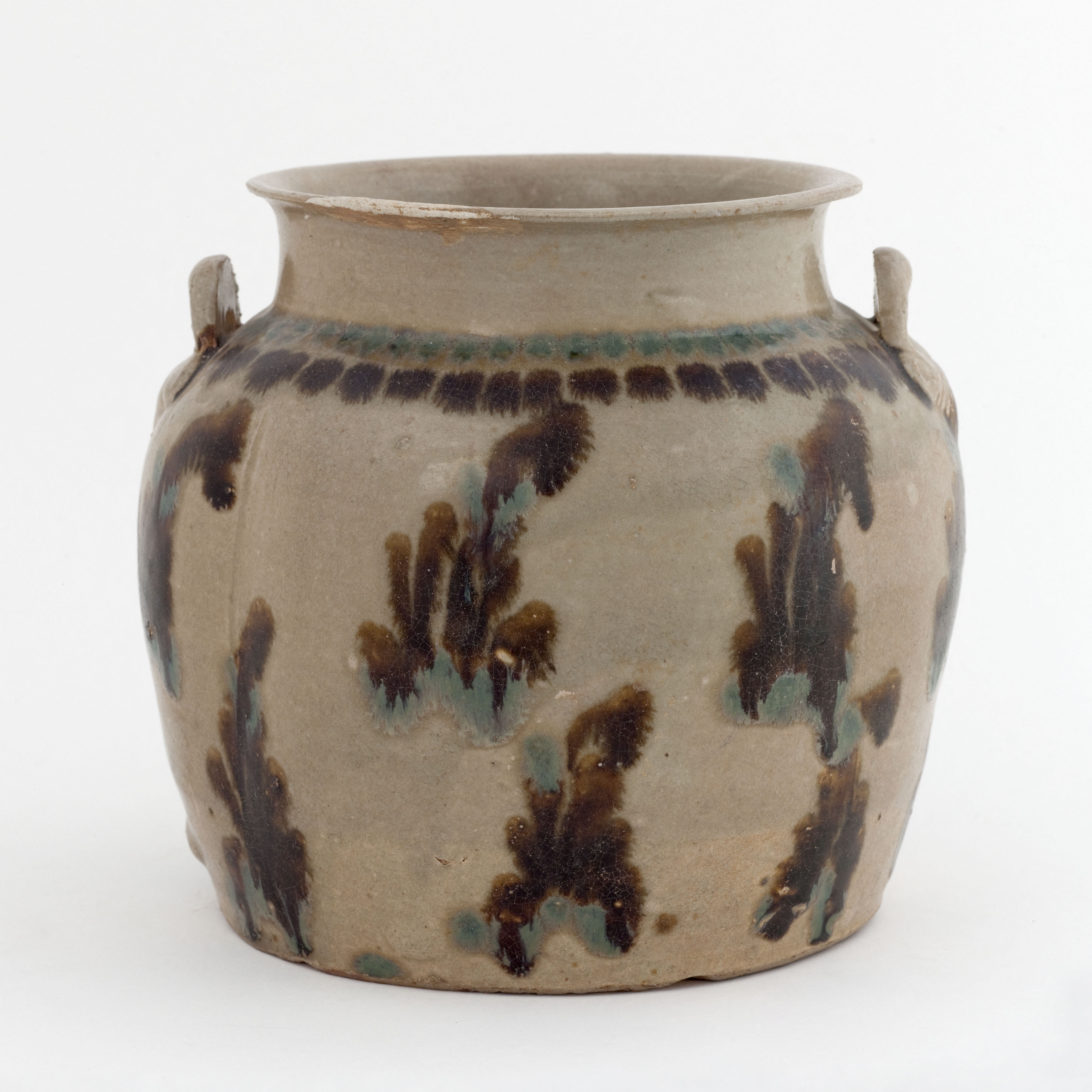
Jarre
Grès, Céramique tournée, Glaçure = Couverte, Céladon, Décor peint sous couverte
Vaisselle et ustensile de cuisine, Jarre
Achat
M.C. 9795
This robust jar has a badly warped concave base. The almost cylindrical wall is discreetly divided into four lobes with vertical grooves. It is rounded at the shoulder, where two small horizontal handles are attached. The wide, prominent neck ends in a flared lip. This form is characteristic of the mid Tang dynasty. The plant-ash glaze is transparent. It is covered with a dense mesh of thin crackles and is tinged with blue-green to bottle-green in places where it is thicker. The inside of the jar and the perimeter of the base are unglazed. The clay body is a light reddish-brown stoneware clay, with numerous bumps and shards indicating the presence of quartz and iron impurities left because of poor preparation. In its colour and quality, the clay still corresponds to works of the previous era (618-806).
The painted underglaze design is composed of a double row of blue and brown dots around the shoulder, and plant motifs in the same colours on the body. The touches of sky-blue are opaque and often edged in white, and the browns are semi-opaque. Changsa stonewares, although utilitarian in nature, were particularly innovative ceramics. They generalised the painted underglaze designs in iron brown that had been experimented with in the Six Dynasties (222-589) period, and were the first to use liquid-liquid phase separation in the glaze to obtain decorative effects. On cooling the glaze became a heterogeneous material containing tiny drops of glass that refracted the light, producing a characteristic sky-blue colour. It is not known how the potter produced this effect on the Changsa stoneware.
Changsa stoneware was widely distributed on the domestic market and was also prized abroad, exported from the port of Yangzhou in Jiangsu.
Marie-Thérèse Bobot, Chine connue et inconnue : Dix années d'acquisitions au musée Cernuschi, Paris, Paris-Musées, 1992, p.48.
